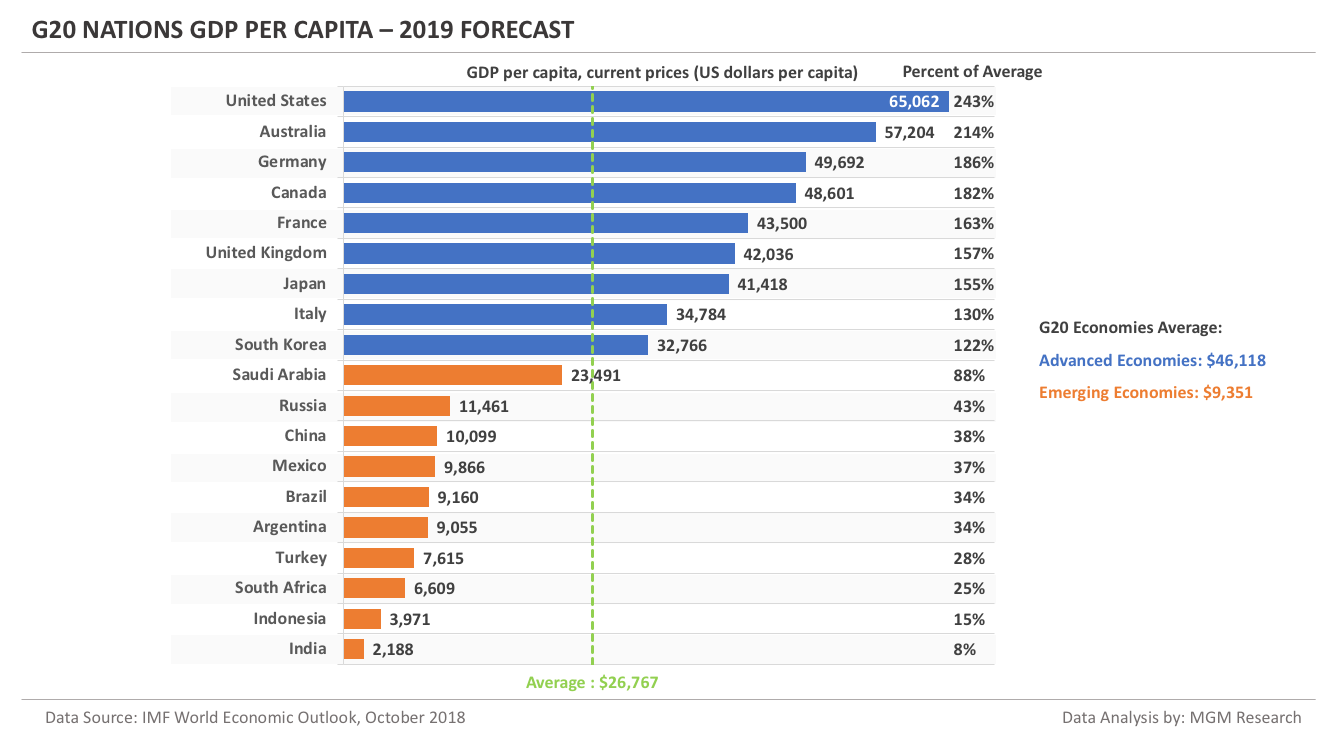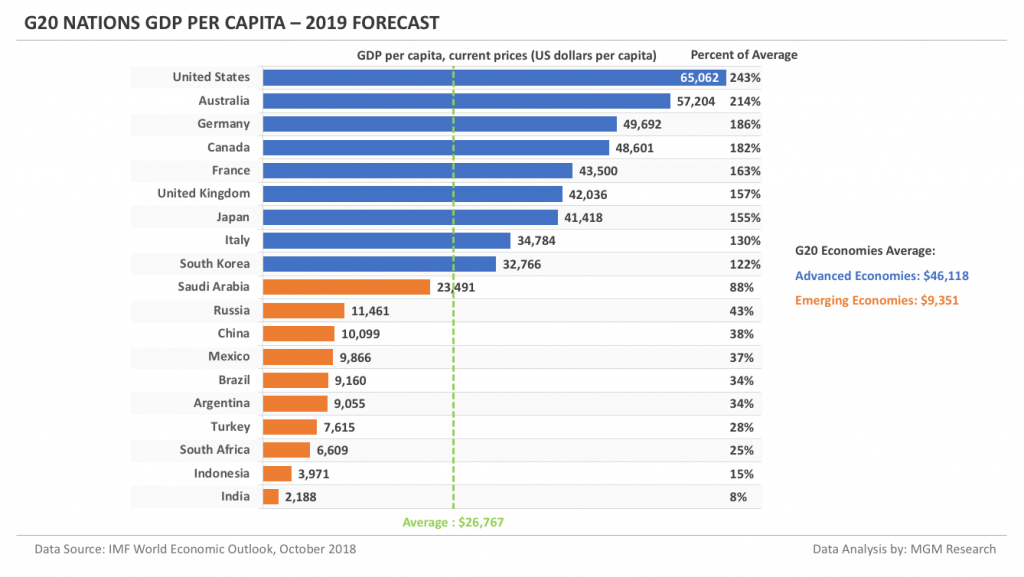

May
One of the most common concerns I come across during discussions concerning China’s impressive GDP growth track record is the fact that perhaps there’s just no longer all that much room to grow.
And, sure, it’s understandable why this concern exists. Think about the fact that on the very homepage of this website, it’s written as clearly as it can be that China’s nominal GDP is the world’s second highest at this point, whereas when it comes to the PPP GDP dimension, it’s actually the leader at this point.
How much room is there to grow in light of these two positions (#2 and respectively #1)?
Well… a lot, actually.
To understand why, I would like to bring a three-word term to your attention: GDP Per Capita.
Furthermore, we’ll take things one step further and take a quick look at the image shared at the beginning of this post again:


As can be seen (according to the IMF), we’re looking at a GDP Per Capita of slightly above $10,000 for China ($10,099 to be more precise), whereas other major countries are light years ahead: the United States with its $65,063 number, Australia at $57,204, Germany and Canada at almost $50,000 and the list could go on and on.
And these are just numbers for large countries, there are also outliers such as Luxembourg with its over $100,000 that can be included in the equation if you so choose.
All in all, though, the most important aspect to remember is not that China is currently not at par with other major countries in terms of GDP per capital. It’s actually even well below the average of $26,767 and that nugget of information in and of itself says quite a bit.
The conclusion is not even in the realm of complex economics, rather in that of simple logic: yes, China has an impressively high GDP but that’s just because it has a population of roughly 1.4 billion.
If you analyze the Angus Maddison database and try to draw some conclusions about the evolution of economies as a percentage of the global GDP over the past not centuries but downright millennia, an important observation arises: up until let’s say the First Industrial Revolution, the GDP of a nation was mostly a function of its population.
To put it differently, there were no major productivity differences between nations like there are today and as such, the share of the global GDP of a country was directly proportional to its population. In such a world (where the GDP per capita of nations is remarkably similar), China and India would have the largest Gross Domestic Products in the world and as we can see, that is hardly the case.
However, once or if (depending on how you choose to see things) those two countries catch up to everyone else in terms of variables such as productivity, their GDP will experience a staggering growth.
Take the GDP per capita of the United States, multiply it by 1.4 billion and you’ll see how much room for growth there actually is. As such, whenever you come across an analysis which revolves around the idea that because China is on position #2 when it comes to nominal GDP and therefore, its growth rate can no longer be impressive , please understand that the analysis in question would only be valid if China and the United States had a similar population.
Needless to say, they don’t.
In light of the fact that China has an approximately 4.3 times greater population than the United States (and the same reasoning can be applied to other case studies), any analysis which doesn’t place quite a bit of emphasis on the GDP per Capita situation can only be misleading.
